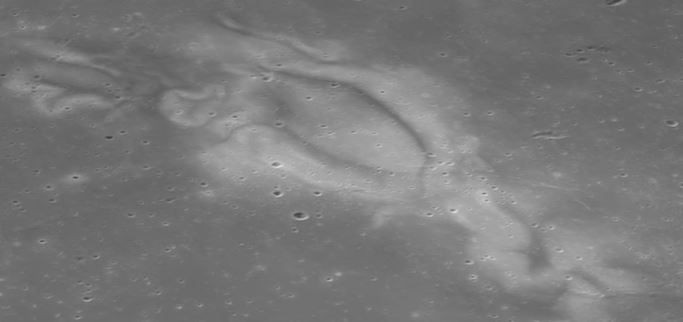What Is A Lunar Swirl? NASA Explains Sun Damage And The Beauty Of The Moon’s Surface

Much like the name “lunar swirl” implies, this feature on the surface of the Moon looks like a wisp of cream in your coffee. But it is more relatable to doing a poor job applying sunscreen — while parts of your skin are protected from the Sun’s rays, other patches and streaks are unprotected and are more likely to be damaged.
Read: Will This Cute Little Robot Go to Mars?
NASA’s Goddard Space Flight Center has used information from its Lunar Reconnaissance Orbiter, which has been taking images of and data from the Moon since 2009, to explain the swirls that we see on its surface, the most famous of which is called Reiner Gamma.
The organization says magnetic fields in the Moon’s crust are “selectively blocking radiation from the Sun and causing parts of the surface to weather at different rates, producing interesting patterns and coloration.” NASA compared the magnetic fields to “stencils” in that respect — with the brighter flourishes of these flat swirls being the parts the magnetic fields are protecting while exposing the adjacent parts to the ink, so to speak, of the Sun’s radiation.
In addition to catching the eyes of observers, lunar swirls are interesting to astronomers because of where they are found: “They are unique,” NASA Goddard’s John Keller said. “We’ve only seen these features on the moon.”
According to NASA, lunar swirls can be dozens of miles long and can appear either alone or in clusters.
When we look up at the Moon, other common sights on the surface are the “seas,” which are composed of the solidified lava from billions of years ago that now appear as dark and smooth blotches; and craters caused by ancient impacts.
See also:
© Copyright IBTimes 2024. All rights reserved.





















